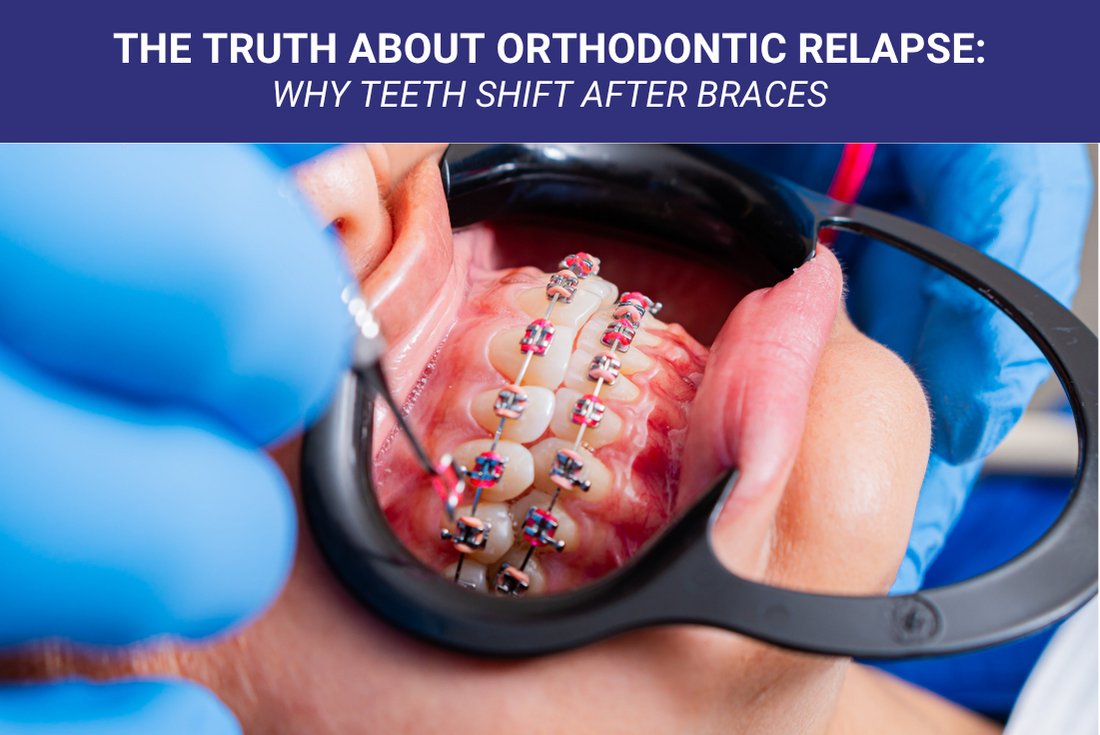 By Willis Orthodontics
By Willis Orthodontics
smilesbywillis.com
You’ve completed your braces journey, enjoyed that first post-braces smile, and tossed your old orthodontic gear with excitement—but months or even years later, you notice your teeth shifting. What’s happening? This phenomenon is called orthodontic relapse, and it’s more common than you might think.
At Willis Orthodontics, we’re dedicated to helping you maintain your smile long after the braces come off. In this post, we’ll uncover why teeth shift after orthodontic treatment, how to prevent relapse, and the importance of wearing your retainer consistently.
What Is Orthodontic Relapse?
Orthodontic relapse refers to the gradual movement of teeth back toward their original, misaligned positions after orthodontic treatment. It can happen shortly after braces are removed or years later if proper retention practices aren’t followed.
Even though braces or aligners correct tooth placement, the ligaments and bone structures that supported your old tooth positions take time to adapt. Without continued support—typically from a retainer—your teeth may begin to shift.
Why Do Teeth Shift After Braces?
There are several reasons why orthodontic relapse may occur:
1. Lack of Retainer Use
The most common cause of relapse is not wearing a retainer as prescribed. Retainers are designed to hold your teeth in place while your bones and gums stabilize. Without that support, natural forces begin to move teeth again.
2. Aging and Natural Changes
As we age, our teeth naturally shift due to changes in jaw structure and pressure from daily chewing and speaking. Even people who never had braces can experience crowding or misalignment over time.
3. Gum and Bone Rebound
After orthodontic treatment, the periodontal ligaments and jawbone need time to “remodel.” This process can take months or even years. If this support system doesn’t stabilize correctly, it can pull the teeth back to their former positions.
4. Wisdom Teeth or Tooth Loss
Pressure from emerging wisdom teeth or space caused by missing teeth can lead to drifting or crowding of the remaining teeth.
5. Poor Oral Habits
Habits like tongue thrusting, nail-biting, or mouth breathing can exert pressure that causes shifting over time.
How to Prevent Orthodontic Relapse
At Willis Orthodontics, we focus heavily on retention planning at the end of your orthodontic journey. Here’s how you can protect your results:
✅ Wear Your Retainer as Directed
Whether it’s a removable retainer (like a Hawley or clear plastic version) or a fixed one, follow your orthodontist’s instructions precisely. Many patients will need to wear a retainer nightly for life to maintain results.
✅ Schedule Regular Checkups
Keep your orthodontic follow-up appointments even after treatment ends. We can monitor small changes before they become major shifts.
✅ Practice Good Oral Hygiene
Inflamed or receding gums can weaken the foundation of your teeth, contributing to movement. Keep your gums healthy to maintain stability.
✅ Watch for Changes
If you notice shifting or discomfort, don’t wait—contact us immediately. The sooner we address it, the easier it is to fix.
What If My Teeth Have Already Shifted?
If you’re experiencing orthodontic relapse, don’t worry—there are treatment options available, including:
- Retreatment with clear aligners or braces
- Minor adjustments using retainers
- Bonded or permanent retainers for long-term support
At Willis Orthodontics, we’ll assess your current alignment and recommend a personalized plan to restore your confident smile.
Frequently Asked Questions (FAQ)
Q: How long do I need to wear my retainer after braces?
A: Initially, you may need to wear your retainer full-time for several months. After that, most patients transition to nighttime wear for life. Consistency is key to preventing relapse.
Q: What type of retainer is best to prevent relapse?
A: Each case is different. Clear plastic retainers are discreet and effective, while fixed (bonded) retainers offer permanent support for certain teeth. Your orthodontist will help you choose the best option.
Q: Is orthodontic relapse permanent?
A: Not necessarily. If caught early, minor relapse can often be corrected with a retainer or short-term aligner treatment. More significant movement may require partial or full orthodontic retreatment.
Q: Can wisdom teeth cause my teeth to shift after braces?
A: Emerging wisdom teeth can contribute to crowding in some cases. We monitor their development closely and may recommend removal if they threaten your alignment.
Q: What should I do if I lost or damaged my retainer?
A: Contact Willis Orthodontics as soon as possible. A delay in replacing your retainer increases the risk of relapse.
Trust Willis Orthodontics to Protect Your Smile
Orthodontic relapse is preventable—and manageable when addressed early. At Willis Orthodontics, we provide lifelong support to help you keep the smile you worked so hard to achieve.
📍 Willis Orthodontics
Website: smilesbywillis.com
📍 Location:
Willis Orthodontics
Visit us online at smilesbywillis.com
📞 Contact Us:
Phone: Check website for local office numbers
Request a consultation: smilesbywillis.com
Schedule your appointment today and let us help you maintain your best smile for years to come!
Don’t let orthodontic relapse undo your progress. Protect your investment with expert guidance from the team at Willis Orthodontics.

